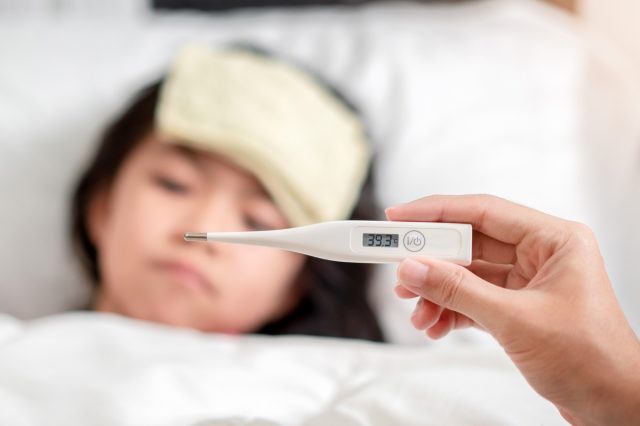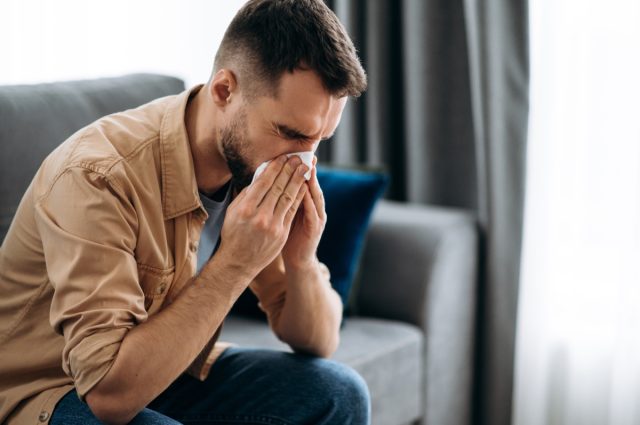Exploring ‘Multiple Viruses Some Deadly Are Now Infecting Americans- Here’s How to Tell Which You Might Have’ RSV, flu, COVID, Strep, the common cold… with so many viruses circulating, it can be tricky knowing what you might have when feeling under the weather. Because these viruses are easily spread, it could easily be any one of them—but some are certainly more dangerous than others. “We should expect more respiratory diseases,” says Dr. Georges Benjamin, executive director of the American Public Health Association. “The best way to reduce your risk is of course to get fully vaccinated for those that which we have a vaccine, so influenza and Covid, with the new bivalent version, are the two most important right now.”
“An annual flu vaccine is the best way to protect against flu,” recommends the CDC. “Vaccination helps prevent infection and can also prevent serious outcomes in people who get vaccinated but still get sick with flu. CDC continues to recommend that everyone ages 6 months and older get an annual flu vaccine as long as flu activity continues.” Good hygiene habits are crucial in protecting from infection. “With COVID, we have appropriately focused on air quality, but many of these viruses can also spread by touching contaminated surfaces, which makes hand washing and cleaning contaminated surfaces really important,” says Thomas Murray, MD, PhD, a Yale Medicine pediatric infectious diseases physician.
“At the beginning of the pandemic, we were wiping down our fruit, vegetables, and everything with bleach, until we found out that COVID doesn’t spread through surfaces—but rather from sneezing, coughing, and expelling respiratory droplets and aerosols,” says Scott Roberts, MD, a Yale Medicine infectious diseases specialist. “RSV spreads much more through contaminated surfaces. A kid rubs snot on their hands and puts the hand on someone else, and then that kid puts their hand in their mouth, and they can be infected. Handwashing and cleaning surfaces are more critical with RSV than with COVID.”
Multiple Viruses Some Deadly Are Now Infecting Americans- Here’s How to Tell Which You Might Have
Here are the most common viruses circulating, and their symptoms.

READ ARTICLE: 1,000 Reasons To Eat A Plant-Based Diet In 2023
Headache, sore throat, fever, and rash are all symptoms of strep. “Scarlet fever is usually a mild illness, but it is highly infectious,” says the UK Health Security Agency. “Therefore, look out for symptoms in your child, which include a sore throat, headache, and fever, along with a fine, pinkish or red body rash with a sandpapery feel. On darker skin, the rash can be more difficult to detect visually but will have a sandpapery feel.”
“Another common symptom of Strep throat in children is a fever over 100’F,” says Stone Oak Pediatrics. “A lower fever may end up being a symptom of a viral infection and not strep throat, so be sure to take note of that. With a viral infection, most fevers should go away on their own within one or two days, and by the third day, other symptoms should start to disappear.”

Respiratory Syncytial Virus (RSV) cases have been particularly bad this year, doctors say. “RSV is a common virus that can affect anyone of any age, and its symptoms are generally mild and manageable,” says Col. Patrick Kennedy, chief of the Armed Forces Health Surveillance Division at the Defense Health Agency. “However, certain populations such as infants, especially premature infants or babies who are 6 months or younger, are at higher risk of serious disease. TRICARE encourages you to be familiar with the signs of RSV and see your health care provider if you think you or a family member has RSV.”
Symptoms of RSV appear about four to six days after infection, and include fever, runny nose, decrease in appetite, coughing, sneezing, and wheezing. Parents of young children should especially watch for signs of trouble with breathing. Not all symptoms necessarily appear at the same time. “If you think you or your child has it, it’s best to pick up the phone and call your doctor or nurse rather than coming into a setting that might mean a long wait or might mean exposure to other viruses that your child and family don’t have and can have risks on their own,” says Dr. Vandana Madhavan, director of advanced pediatrics at Mass General Brigham in Boston. Doctors and other healthcare professionals can then go through a checklist of symptoms and warning signs, and then decide on the best treatment. “Based on that information they can recommend that you start doing nasal saline drops, use a humidifier or shower, or do other things to help loosen up mucus and decrease congestion,” Dr. Madhavan says. “If it’s a child older than one, they may say try honey to help with a cough or give suggestions on how to bring down a fever.”

ALSO READ: 10 New Food Trends You Should Try in 2023
Flu symptoms can often overlap with COVID-19. “Most people who have the flu (influenza) have a mild illness and don’t need to see a doctor,” says Pritish K. Tosh, M.D. “With some rest and self-care measures at home, the average healthy person can expect to get better within a week, although a dry cough may last for several weeks.” Common symptoms of flu include sore throat, cough, headache, muscle aches and chills, fatigue, fever, runny nose, and GI issues such as nausea/vomiting/diarrhea.
“If you or someone you’re caring for is at high risk of flu-related complications and you suspect the flu, call the doctor,” says Dr. Tosh. “For those at high risk of flu-related complications or who have severe flu, there’s a greater chance that the flu might lead to pneumonia, bronchitis, sinus infections, and, rarely, hospitalization or death. The flu can also worsen chronic health problems such as asthma and congestive heart failure.” Those at high-risk include children, adults over 65, the immunocompromised, people with a BMI over 40, pregnant women (or those who have just given birth), and people with chronic health conditions such as asthma.

With all the scary viruses circulating, don’t forget the common cold is still very much with us. “The common cold is a viral infection and is one of the most common illnesses worldwide. It leads to more visits to health care providers and absences from school than any other illness,’ says John P. Cunha, DO, FACOEP. “Adults get about 2-3 colds each year, and children may get even more. The most common symptoms of a cold are nasal congestion or stuffiness, watery eyes, body aches, runny nose, sore throat, and low-grade fever. Coughing and sneezing may follow these symptoms.
“Symptoms of a cold develop 1-3 days after exposure to the virus. The duration of cold symptoms varies, but 7-10 days is typical. There are remedies that can bring relief of cold symptoms, but there is no cure for the common cold. Home remedies to relieve symptoms include rest, drinking plenty of fluids, and taking over-the-counter pain and fever medications. Antibiotics are not effective against colds since they do not work against viruses.”

Experts warn COVID-19 is still very much something to be concerned about, especially with cases surging in China. Omicron subvariants are still spreading across the globe. “We’re seeing Omicron do what viruses do, which is it picks up mutations along the way that helps it evade a little bit of immunity that’s induced by previous infection or vaccination,” says Andrew Pekosz, a microbiologist and immunologist at the Johns Hopkins Bloomberg School of Public Health in Baltimore. “We haven’t seen any major jumps in terms of Omicron evolution in some time. But it’s getting to that stage where it’s something that we have to continue to monitor.”
COVID-19 symptoms include fever or chills, cough, shortness of breath, difficulty breathing, fatigue, muscle or body aches, headache, loss of taste or smell, sore throat, congestion or runny nose, nausea or vomiting, and diarrhea. “To me, what’s really a concern is the ongoing infections and whether they’re producing more variants in China that might be of particular concern for us, and testing people before they get on a plane won’t answer that question. What we really need is to do a much better job of sequencing the viruses from individuals who are travelling from China so that we can aid in terms of understanding what kinds of variants are circulating there.”
READ POST: 7 Early Symptoms of Kidney Disease You Should Know, Doctors Say

